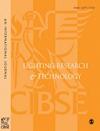扩展整体照明解决方案的照明设计目标程序
IF 2.2
3区 工程技术
Q2 CONSTRUCTION & BUILDING TECHNOLOGY
引用次数: 5
摘要
作者之前提出了一种新颖的基于电子表格的照明设计目标程序(LiDOs),使从业者能够协调与空间内照明空间分布相关的相互作用的LiDOs,并且该程序已被几个照明设计实践成功采用。本文建议将该过程发展为一个扩展的基于计算机的照明设计工具(LiDOs2),其中包括与光谱和时间照明分布以及空间分布相关的lido。这将使监管机构能够指定基本室内照明目标的限制值,例如照明的感知充足性,同时指导从业人员纳入lido,以解决选择适合特定应用的照明特性。LiDOs2程序将能够生成整体照明性能规范,使从业人员能够对光源和灯具进行知情搜索,并确定布局和控制电路,确信lido2的指定组合将得到实现。本文章由计算机程序翻译,如有差异,请以英文原文为准。
Extending the lighting design objectives procedure for holistic lighting solutions
The author has previously proposed a novel spreadsheet-based lighting design objectives procedure (LiDOs) that enables practitioners to reconcile interacting LiDOs relating to the spatial distribution of illumination within a space, and this procedure has been successfully adopted by several lighting design practices. This paper proposes that the procedure is developed into an extended computer-based lighting design tool (LiDOs2) that includes LiDOs relating to spectral and temporal illumination distributions, as well as spatial distribution. This would enable regulators to specify limiting values for basic indoor lighting objectives such as perceived adequacy of illumination while at the same time guiding practitioners to incorporate LiDOs that address characteristics of lighting chosen to suit specific applications. The LiDOs2 procedure would be capable of generating holistic lighting performance specifications that would enable practitioners to conduct informed searches for light sources and luminaires, and to determine layouts and control circuits with confidence that the specified combination of LiDOs would be achieved.
求助全文
通过发布文献求助,成功后即可免费获取论文全文。
去求助
来源期刊

Lighting Research & Technology
工程技术-光学
CiteScore
5.40
自引率
16.00%
发文量
69
审稿时长
>12 weeks
期刊介绍:
Lighting Research & Technology (LR&T) publishes original peer-reviewed research on all aspects of light and lighting and is published in association with The Society of Light and Lighting. LR&T covers the human response to light, the science of light generation, light control and measurement plus lighting design for both interior and exterior environments, as well as daylighting, energy efficiency and sustainability
 求助内容:
求助内容: 应助结果提醒方式:
应助结果提醒方式:


